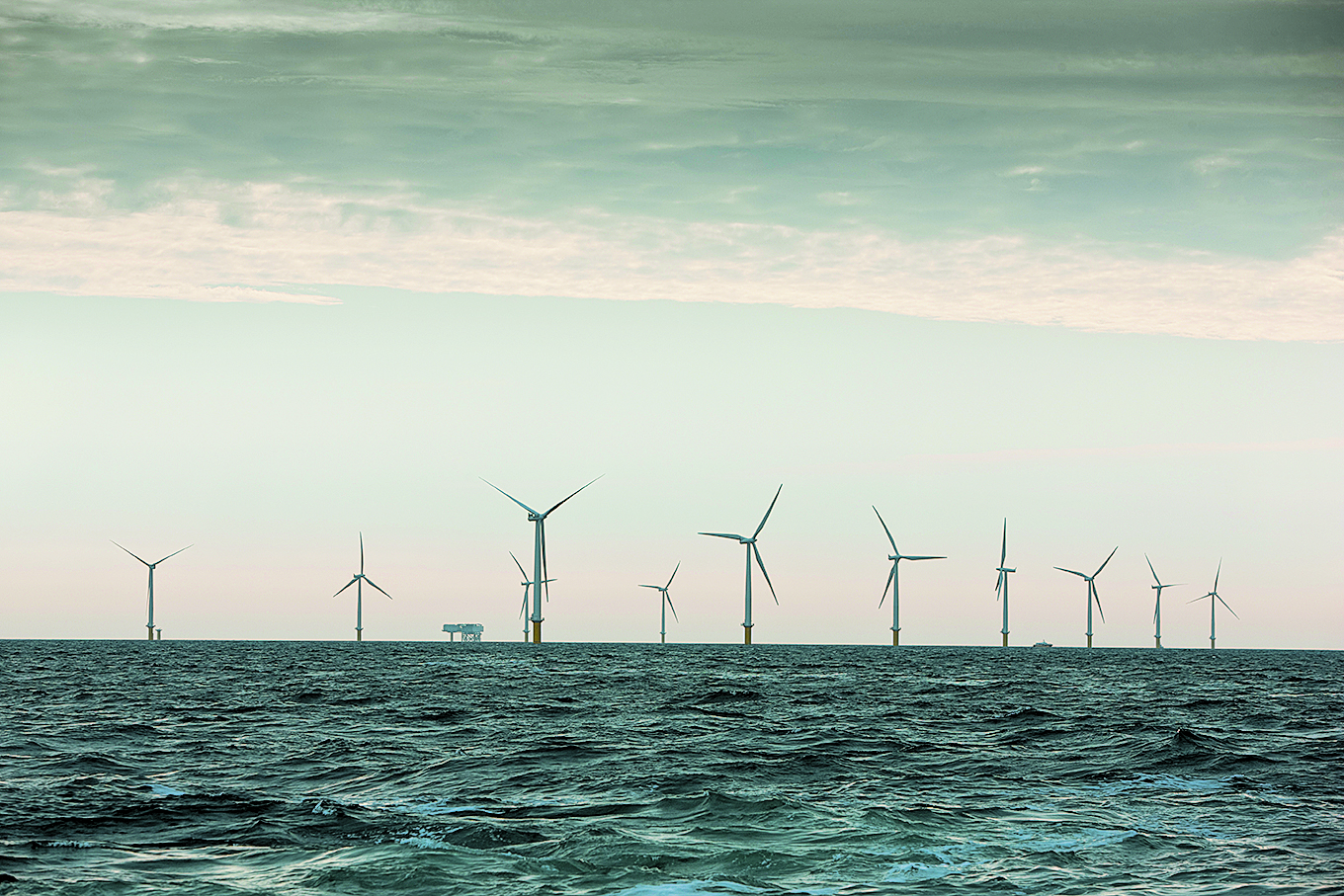
Part of an offshore wind farm developed by DONG Energy in the North Sea capable of powering 200,000 homes. Photo: ongenergy.com
By Tyler Morin
February 28th marked the start of a revolutionary conference with industrial-sized, clean energy implications. The U.S. Offshore Wind Leadership Conference was held in Boston, Massachusetts. With the bright lights of the city on one side of the hosting hotel and a view of the Atlantic on the other, the juxtaposition of energy and the ocean couldn’t have been clearer. This event brought together entrepreneurs, industry magnates, and future energy leaders for one singular purpose: to develop the offshore wind industry in the United States of America.
Void of bureaucrats, the event was meant to bring these industrially-important people together. Through a plethora of panel presentations, discussions, and networking sessions, the seeds have been planted to get this industry moving.
Truthfully, the planting of seeds began many years ago when a project titled Cape Wind began off Cape Cod. After years of political and legal battles, the project is, and may forever remain, a thought. Another attempt at developing offshore wind in the United States occurred when a Norwegian energy company showed interest in a project off the coast of Maine. Due to a variety of factors including uncertain energy policy, the company took its investment to Scotland. The project, called Hywind, is going to cost almost a quarter of a billion dollars – money that Scotland is happy to see spent in that country.
So what makes this year so special for offshore wind in America? Enter the Block Island Wind Farm in Rhode Island. Deepwater Wind, the project developer, is halfway through construction of our country’s first offshore wind facility. Offshore wind is now a present industry in New England. Marion Gold, a commissioner in Rhode Island’s Office of Energy Resources, claimed that this success was largely due to policy agreement between stakeholders and the project developer. Another indicator for success is the arrival of the largest offshore wind developer in the world. DONG Energy, titling their local efforts as “Bay State Wind,” has decided the American market is worth investing in. They purchased a lease agreement and plan on constructing within the next few years. One might ask, “Why here?”
Massachusetts has a very inviting coastal environment for offshore wind technology. The state is also going to be decommissioning a number of power plants in the near future, including coal and nuclear facilities. Therefore, a demand has been created for new sources of energy. With Europe’s quick development of the offshore wind industry, the cost of electricity from offshore wind has continued to decrease, making it a viable option with a promising future.
While there is a need for energy producers like offshore wind, this industry is still in its infancy. If we want to bring in its job-creating, clean energy solutions, we must show demand. So how do we, as a country, make this happen? The answer is industrial policy. Current federal policies for wind and solar are going to expire by 2019 and 2021, while oil and gas policies are permanent. I’ll repeat that word for emphasis: permanent. We need to show public demand for clean energy. We need to show public demand for energy independence. We need to show public demand for the elimination of financial exportation to OPEC so that we invest in resources and job creation here in America. Our policies are enabled by our politicians, and our politicians are enabled by our people.
As the conference drew to an end, we were reminded of the potential for the growth of the industry and the positive effects of embracing a local resource. When a panelist was asked what the single most important step will be in getting this industry off the ground, he quickly indicated that it was the passing of Massachusetts’ senator Ed Markey’s credit extension bill. This bill will instill confidence in industrially capable entities that Americans want clean energy. So contact your senators and congressmen and tell them that you want this bill passed. Also, when you vote for new representatives for your town, your state, and your country, be confident that they will represent your opinions on clean energy.
For more information about offshore wind, visit offshorewind.works
Tyler Morin is an engineer with interests global wind efforts. Morin’s passion for renewable energy is exceeded only by his love of the outdoors. A recent Appalachian Trail “thru hiker,” Morin aims to complement New England’s iconic beauty with a leading clean energy industry.








Leave a Reply